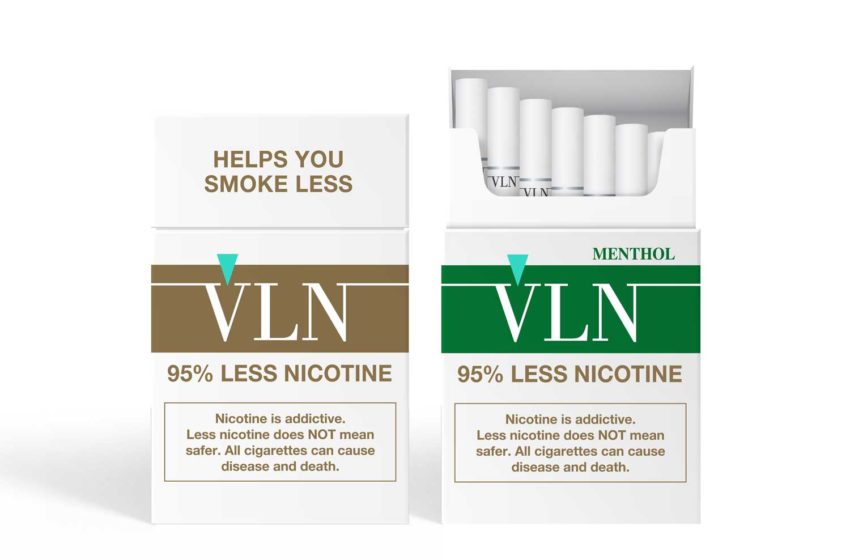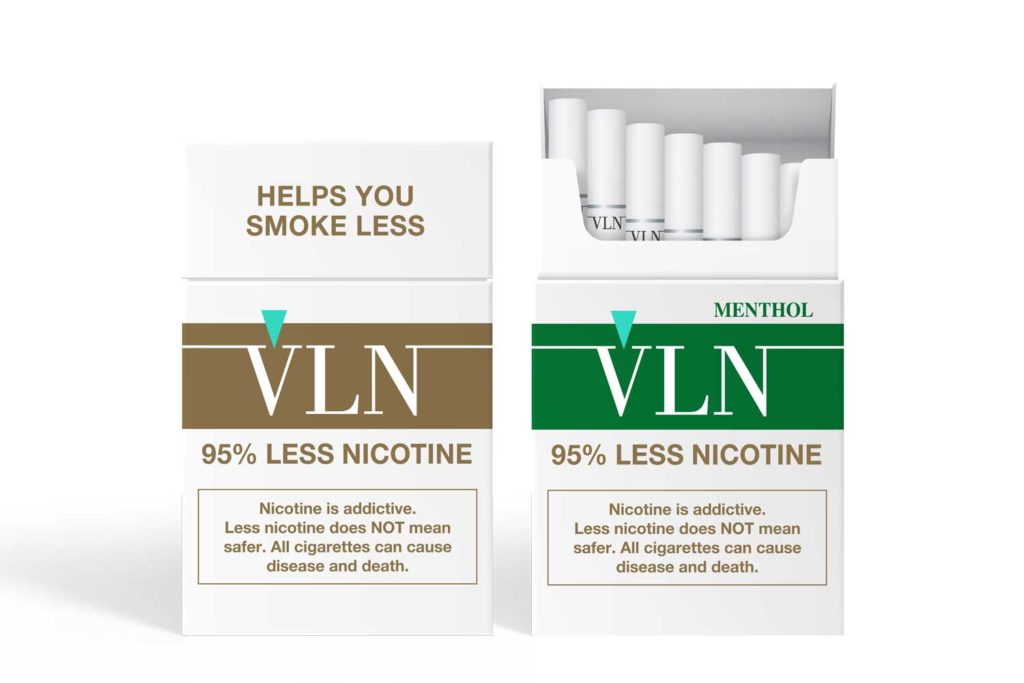Appropriate for the Protection of Health?
- Also in TR Cheryl Olson Nicotine Print Edition
- February 1, 2022
- 0
- 1
- 11 minutes read


The FDA’s focus on nicotine is coming at the expense of true harm reduction.
Cheryl K. Olson
I was gobsmacked last December when the U.S. Food and Drug Administration issued modified-risk tobacco product (MRTP) authorizations for two reduced-nicotine combustible cigarettes, 22nd Century Group’s VLN King and VLN Menthol King. Both contain non-GMO tobacco that’s very low in nicotine (VLN). If 22nd Century Group can reduce the disastrous health effects of smoking by offering low-nicotine combustible cigarettes, that’s great. What took me aback was the implicit message from the FDA on its priorities.
VLN products such as these were supposed to be part of a smoking harm reduction landscape—one that includes approaches proven to reduce the risks of illness and death among cigarette smokers, such as vaping, heat-not-burn and smokeless tobacco. But this ideal, data-driven society in which addicted smokers bob gently down the famous continuum of risk via the path they prefer (perhaps starting with VLN cigarettes, perhaps with another product and ultimately landing at their low-risk nicotine maintenance or tobacco-free destiny) isn’t where we’re living.
Such a Candide-like world would feature a rainbow of reduced-risk products that match the needs of individual smokers and smokers and people who influence them (such as doctors) fully aware of these products and of how and why they’re lower risk. They’d also know that traditional approaches to quitting (hello, “cold turkey” and nicotine-replacement therapy) have proved depressingly ineffective, especially among heavily addicted, low-income, longtime smokers: the folks who need our help the most.
The FDA claimed to envision such an environment when Scott Gottlieb, then the agency’s commissioner, stated in 2017 that “Nicotine lives at the core of both the problem and, ultimately, the solution to the question of addiction and the harm caused by combustible forms of tobacco. … So, how can we take a new and comprehensive approach to nicotine?”
Gottlieb continued, “Armed with the recognition of the risk continuum, and the reality that all roads lead back to cigarettes as the primary cause of the current problem, we need to envision a world where cigarettes lose their addictive potential through reduced nicotine levels. And a world where less harmful alternative forms, efficiently delivering satisfying levels of nicotine, are available for those adults who need or want them.”
Instead, the FDA prioritized very low-nicotine cigarettes and dropped the ball on that last, essential part: the “less harmful alternative forms.” Those products, despite considerable and growing scientific evidence of their real-world effectiveness, have been left in limbo.
A Passing Grade on the Wrong Test
What exactly happened? An MRTP is simply a request to the FDA that a tobacco-related company be allowed to make some specified changes in how it describes a product or set of products to the general public through its packaging, marketing, advertising and other forms of promotion and communication.
In this case, 22nd Century Group wanted to state that each of its products contains “95 percent less nicotine,” “helps reduce your nicotine consumption” and “VLN smells, burns and tastes like a conventional cigarette but greatly reduces your nicotine consumption.” They provided the scientific evidence to back up those claims.
Among the hurdles for a successful MRTP authorization is that the manufacturer demonstrates that the product is “appropriate for the protection of the public health,” or APPH. In other words, that the requested modifications do or have the potential to do more good than harm if approved. That’s a core question that needs to be addressed in any tobacco-related application or authorization request to the FDA.
The Tobacco Control Act of 2009 begins with the words, “To protect the public health ….” That shows the clear focus and intent of the legislation. While the phrase “appropriate for the protection of the public health” appears several times in the act, it’s frustratingly vague and subject to interpretation.
What’s clear, however, is that the FDA should prioritize those aspects of smoking that are the most harmful to individual and public health. While reducing nicotine intake is appropriate for the protection of the public health, it should be nowhere near the top of the list.
It’s Not the Nicotine That Kills
Morbidity and mortality among smokers, including cancers and heart disease, are caused by the “tars” and other byproducts of combustion—what researchers often call harmful and potentially harmful constituents (HPHC). Because it’s addictive, nicotine is also considered an HPHC. As Michael Russell famously put it, “People smoke for the nicotine, but they die from the tar.”1
In its February 2020 presentation on its products to an FDA Tobacco Products Scientific Advisory Committee panel, 22nd Century Group clearly states, “VLN cigarettes yield essentially the same HPHCs as conventional cigarettes. The benefits of VLN accrue from reduced cigarettes per day and reduced abuse liability.” That’s consistent with their authorization request since they’re only claiming a reduction in the amount of nicotine.
Think about that for a moment. The premise that reduced nicotine in combustible cigarettes will reduce harm is based on an assumption that the number of cigarettes smoked will decrease. That’s because the other HPHCs—the substances that lead to illness and death—are the same in the very low-nicotine and the regular cigarettes. Will they?
Compensatory Smoking
Maybe. Maybe not. It’s an empirical question that requires research with these specific products. Researchers studying smokers who switched to earlier generations of low tar and low nicotine cigarettes, known as low-yield cigarettes, found that many engaged in what’s known as compensatory smoking.
According to the Centers for Disease Control, “Most people who smoke are addicted to nicotine. They may compensate when smoking low-yield cigarettes in order to take in more nicotine.”5
A historical review of tobacco industry approaches to marketing low-yield cigarettes concluded, “Unfortunately for the industry, smokers did not care much for the taste of reduced tar cigarettes and, as expected, the lower nicotine levels became a problem as well. Smokers were not receiving the same nicotine ‘satisfaction’ and therefore began to compensate for the reduction in nicotine by smoking more cigarettes, thus increasing their health risk.”2
These earlier studies were conducted on combustible cigarettes with significantly higher levels of nicotine than the VLN products. Some well-respected smoking harm reduction experts such as Clive Bates theorize that the nicotine levels in this generation of cigarettes is so low that compensatory smoking will not be a problem. But how, then, is this different from the low success cold turkey approach? Also, what about dual use? There is nothing to prevent a smoker from using both types of products.
What’s the Real Harm?
But this distracts from the fundamental problem. The FDA’s focus is on the wrong chemical: nicotine. It’s often the first or only chemical most people can name when describing tobacco. That’s one of the reasons why the addictive quality of nicotine is so often conflated with combustible tobacco’s relationship with heart disease and cancer.
Several studies of physicians’ knowledge about the clinical effects of nicotine find misperceptions are frustratingly common. Roughly four out of five doctors surveyed incorrectly linked nicotine to cardiovascular disease (83.2 percent), chronic obstructive pulmonary disease (80.9 percent) and cancer (80.5 percent).9 They should know better.
This distortion of the role of nicotine among smokers, and some of the people who counsel them when they try to quit or at least reduce their medical risk, can interfere with their motivation to use some of the proven pathways away from combusted tobacco.
This focus on nicotine reduction and the misunderstanding of its risks may be precluding addicted smokers from switching to products that significantly reduce harm. According to Public Health England, “One assessment of the published data on emissions from cigarettes and e-cigarettes calculated the lifetime cancer risks. It concluded that the cancer potencies of e-cigarettes were largely under 0.5 percent of the risk of smoking. Comparative risks of cardiovascular disease and lung disease have not been quantified but are likely to be also substantially below the risks of smoking. Among e-cigarette users, two studies of biomarker data for acrolein, a potent respiratory irritant, found levels consistent with nonsmoking levels.”
My frustration is that the FDA, through its priorities and recent actions, is inadvertently reinforcing misinformation that interferes with the goal of protecting the public health by focusing on nicotine reduction at the expense of true harm reduction.
Last year, I interviewed former industry scientist Justine Shaw Jackson for another Tobacco Reporter column; she spoke of the need to give people nicotine “without all the nasties in the smoke.” That phrase stuck in my head, creating a mashup of her words and Russell’s insight: “It’s not the nicotine that kills—it’s the nasties in the smoke.” Let’s embroider that phrase on pillows and send one to every doctor and nurse in the world.

